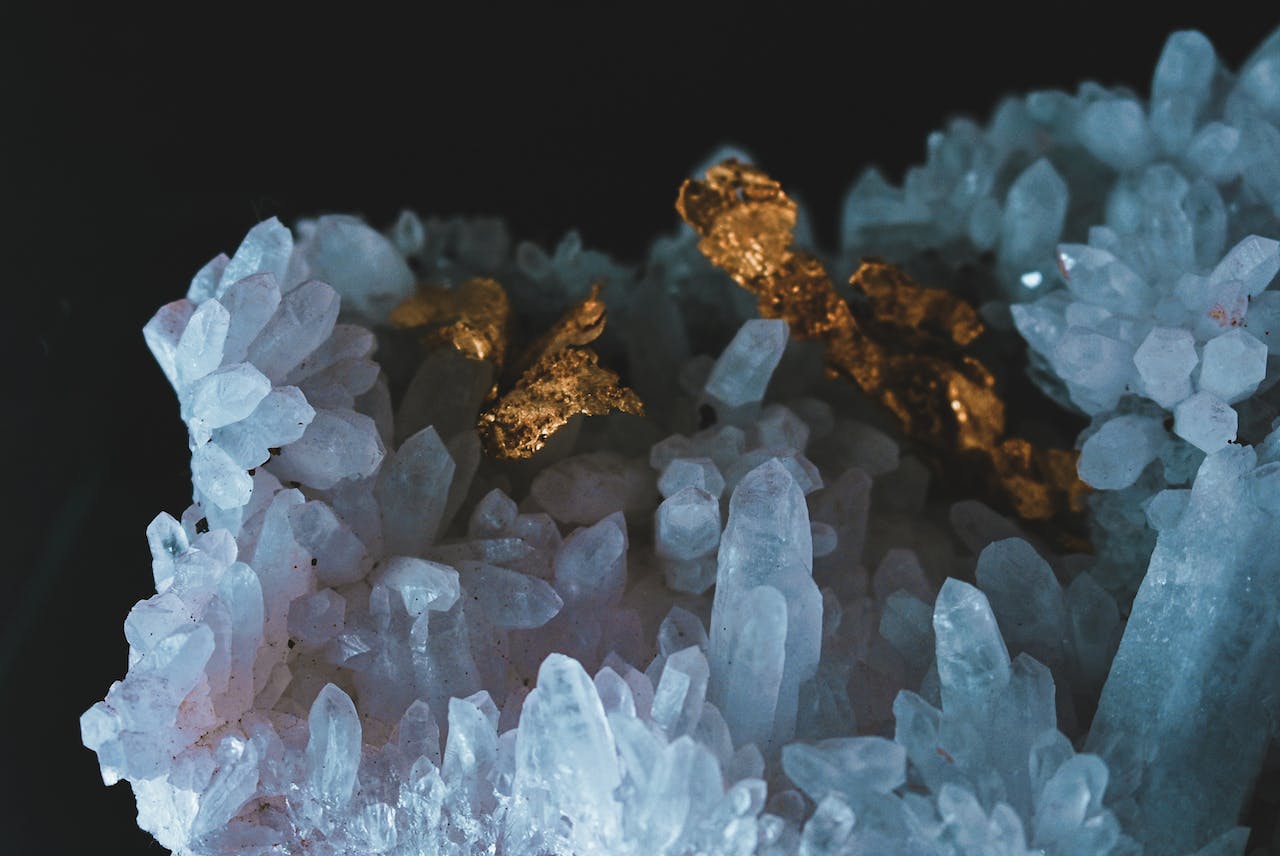Mercury, often referred to as quicksilver, has captured the imagination of humans for centuries. Its liquid, silver-white appearance at room temperature and historical use in various applications have led to questions about its nature as a metal. In this article, we will explore the elemental properties of mercury and its classification as a metal, delving into its physical and chemical characteristics, its historical uses, and its role in modern technologies. By the end, you will have a comprehensive understanding of whether mercury qualifies as a metal or if there are exceptions to this classification.

-
Mercury’s Elemental Nature
Elemental or metallic mercury is distinct in appearance, being a shiny, silver-white liquid at room temperature. It is unique among the elements because it exists in a liquid state under standard conditions. This characteristic alone raises questions about its classification, as the majority of known metals are solid at room temperature. To determine whether mercury is indeed a metal, let’s consider the defining features of metals.
-
Characteristics of Metals
To determine whether mercury qualifies as a metal, we must first understand the characteristics that define a metal. Metals share several key properties, including:
2.1 Luster
One defining characteristic of metals is their luster or shine. Metals typically have a shiny or metallic appearance, which is a result of their ability to reflect light efficiently. When it comes to mercury, its silver-white, reflective surface is a prominent feature, aligning with the luster associated with metals.
2.2 Conductivity
Metals are known for their exceptional electrical and thermal conductivity. They allow the flow of electricity and heat with ease due to the presence of mobile electrons. Elemental mercury exhibits good electrical conductivity, meeting this criterion for metal classification.
2.3 Ductility and Malleability
Metals can be stretched into wires (ductility) and flattened into thin sheets (malleability) without breaking. While mercury is not typically observed in a solid state, the fact that it flows like a liquid at room temperature makes it nonapplicable to these traits. Instead, its liquid state is a unique feature setting it apart from other metals.
2.4 Density
Metals are generally dense materials, meaning they have a high mass for a given volume. Mercury is no exception to this rule. It has a high density, making it considerably heavy for its volume as a liquid.
-
The Periodic Table and Mercury
To classify mercury correctly, it is essential to turn to the periodic table, which arranges elements according to their properties. Mercury is located on the periodic table in Group 12, Period 6, and is represented by the symbol Hg. This places it in the same group as other metals like zinc, cadmium, and copernicium.
The periodic table is a crucial tool for understanding the nature of elements. Elements within the same group share similar chemical properties. Since mercury is placed in the same group as well-established metals, this supports its classification as a metal.
-
The Chemical Behavior of Mercury
The chemical behavior of an element is another key indicator of whether it is a metal. Metals typically exhibit certain chemical characteristics, including:
4.1 Reactivity
Metals often react with other elements to form compounds, such as metal oxides, when exposed to air and moisture. While mercury is generally unreactive in its elemental form, it can form compounds when combined with other elements. Mercuric oxide (HgO) is one such compound, illustrating its reactivity and metallic nature.
4.2 Ionization
Metals readily lose electrons to form positively charged ions (cations). In the case of mercury, it forms cations like Hg²⁺ when it loses electrons, which aligns with the behavior of metals.
4.3 Alloys
Metals are commonly used in the formation of alloys, which are mixtures of two or more elements, with at least one being a metal. Mercury is used in some alloys, particularly in the production of dental amalgam and certain electrical applications. Its ability to form alloys further supports its classification as a metal.
-
Historical Uses of Mercury
Mercury’s historical applications provide additional insight into its classification as a metal. Throughout history, it has been employed for various purposes due to its unique properties:
5.1 Alchemy
In the realm of alchemy, mercury was a key element, often associated with transformation and change. Alchemists believed that mercury possessed mystical properties, which further fueled its enigmatic reputation.
5.2 Thermometers
One of the most well-known uses of elemental mercury is in thermometers. The expansion and contraction of mercury in a glass tube with changes in temperature have made it an ideal substance for measuring temperature accurately. This application underscores its metallic properties, especially its high thermal expansion.
5.3 Electrical Switches
Mercury switches, although less common today due to environmental concerns, were once widely used in electrical systems. These switches relied on the electrical conductivity of mercury to complete or interrupt circuits, further supporting its classification as a metal.
5.4 Fluorescent Lamps
Mercury vapor is used in fluorescent lamps, where it emits ultraviolet light that, in turn, excites phosphor coatings to produce visible light. This application is rooted in the chemical behavior of mercury, demonstrating its unique properties.
-
Environmental and Health Concerns
While elemental mercury exhibits properties that align with those of metals, it is essential to acknowledge the environmental and health concerns associated with this element. Mercury is a toxic substance, and its release into the environment can have severe consequences.
6.1 Environmental Impact
Mercury pollution, primarily through industrial processes and coal combustion, can lead to the contamination of ecosystems and bioaccumulation in organisms. This pollution has prompted international efforts to reduce mercury emissions and mitigate its environmental impact.
6.2 Health Risks
Exposure to elemental mercury vapor can have adverse health effects. Inhalation of mercury vapor can lead to symptoms such as tremors, mood changes, and neurological problems. Therefore, it is crucial to handle and dispose of mercury-containing devices with care.
-
Modern Applications and Alternatives
In modern times, the use of mercury has declined in various applications due to its toxic nature. However, it still finds limited use in some technologies, and alternatives have been developed to mitigate its environmental and health risks.
7.1 Dental Amalgam
Mercury-containing dental amalgam has been widely used in dentistry for its durability and ease of use. However, due to concerns about mercury exposure, alternative materials like composite resins and ceramics are increasingly preferred.
7.2 Lighting
Although mercury vapor lamps have been widely used in lighting, efforts to reduce mercury emissions have led to the development of more energy-efficient alternatives, such as LED and CFL (compact fluorescent lamp) technologies.
7.3 Thermometry
Digital thermometers have largely replaced traditional mercury thermometers in medical and industrial applications due to concerns about the handling and potential mercury exposure associated with the latter.
-
Conclusion
In summary, elemental or metallic mercury exhibits several properties that align with the characteristics of metals. Its luster, electrical conductivity, chemical behavior, density, and classification on the periodic table all support its classification as a metal. Its historical uses in thermometers, electrical switches, and fluorescent lamps further emphasize its metallic properties.
However, it is essential to recognize the unique aspect of mercury’s liquid state at room temperature, which distinguishes it from most other metals. Additionally, its toxic nature and environmental concerns have led to reduced usage in many applications.
While mercury’s classification as a metal is well-supported by its elemental properties and historical uses, it is equally important to acknowledge the safety and environmental issues associated with its use. As society continues to seek alternatives to reduce mercury exposure and pollution, the future of mercury in various applications may continue to evolve. Ultimately, mercury’s classification as a metal remains rooted in its elemental characteristics, making it a truly unique and intriguing element in the periodic table.





